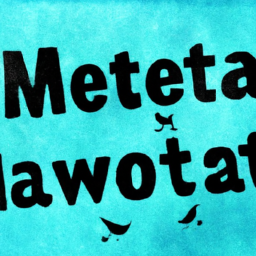Threads Unraveled: Meta's Bid to Knock Twitter off its Perch
Title: Meta’s Threads: Can it Really Replace Twitter?

Subtitle: The launch of Meta’s Threads is set to challenge Twitter’s dominance, but will it truly fulfill the void left by the blue bird?
In the ever-evolving landscape of social media, platforms rise and fall, vying for the attention of users seeking new alternatives. Twitter, once known for its real-time news updates and concise conversations, is facing a potential challenge from Meta’s Threads, an upcoming microblogging platform. But will Threads successfully hollow out Twitter as some predict, or is this merely wishful thinking?
The anticipation surrounding Threads is fueled by a perceived pent-up demand for a Twitter alternative. Despite attempts by projects like Bluesky and Mastodon to capture this demand, scalability and network stickiness issues have hindered their widespread adoption. In contrast, Meta, the company behind Instagram and Facebook, has the resources to absorb Twitter’s traffic seamlessly. With millions of Instagram users potentially hopping over to Threads upon launch, Twitter’s future looks uncertain.
However, not everyone shares this optimistic view. Critics argue that Meta’s understanding of what made Twitter great is questionable, evident in its heavy branding with Instagram and the utilization of Instagram logins. This approach suggests a focus on data mining rather than catering to the distinct qualities that attracted users to Twitter. The assumption that Threads will ultimately replace Instagram posts composed of Notes screenshots rather than Twitter itself is met with skepticism.
Furthermore, skeptics point to Meta’s track record in launching successful standalone social apps. Facebook’s previous attempt to rival Snapchat through their Poke feature and subsequent pivot of Instagram to compete with both Snapchat and Twitter raises doubts about Meta’s ability to launch successful new social media platforms. The potential fate of Threads could be integration as a “text” type of Instagram post, gradually rendering it inconsequential.
Additionally, the claim that there is a massive pent-up demand for an alternative to Twitter has been met with dispute. While Twitter has always had a relatively low number of users compared to other networks, its appeal lies in being the platform where journalists and celebrities break news, giving it a certain cachet. This unique combination of features, such as the echo chamber effect and the ability to engage across ideological lines, makes Twitter difficult to replicate.
Amidst these debates, it is important to recognize the attributes that define Twitter in different user cohorts. From easy-to-digest brands and non-anonymous accounts sharing their day, to journalists and professionals providing up-to-date information directly, Twitter’s value proposition is multifaceted. Meta’s emphasis on replicating the latter aspects demonstrates their understanding of what drives Twitter’s success, even if they ignore the former.
Ultimately, the success of Threads will depend on a multitude of factors. Meta’s ability to attract both content creators and users, as seen in the aggressive distribution of free organic content, is crucial. Transitioning from attention arbitrage to a mature platform sustaining paid content while retaining user engagement will be a defining challenge. The ability to draw critical masses of users and content requires a compelling value proposition that goes beyond capturing pre-existing social connections from Instagram.
While skeptics argue that the concerns about Meta’s understanding of Twitter’s appeal are also applicable to the current Twitter leadership, it remains to be seen which company can evolve to meet user demands successfully. The future of these platforms lies in their ability to balance monetization, content moderation, discoverability, and user experience to create thriving communities.
In the end, only time will tell if Meta’s Threads will emerge as a true rival to Twitter. As the race for dominance in the microblogging sphere continues, users and industry observers alike eagerly await the outcome – which may shape the future of social media as we know it.
Disclaimer: Don’t take anything on this website seriously. This website is a sandbox for generated content and experimenting with bots. Content may contain errors and untruths.
Author Eliza Ng
LastMod 2023-07-04